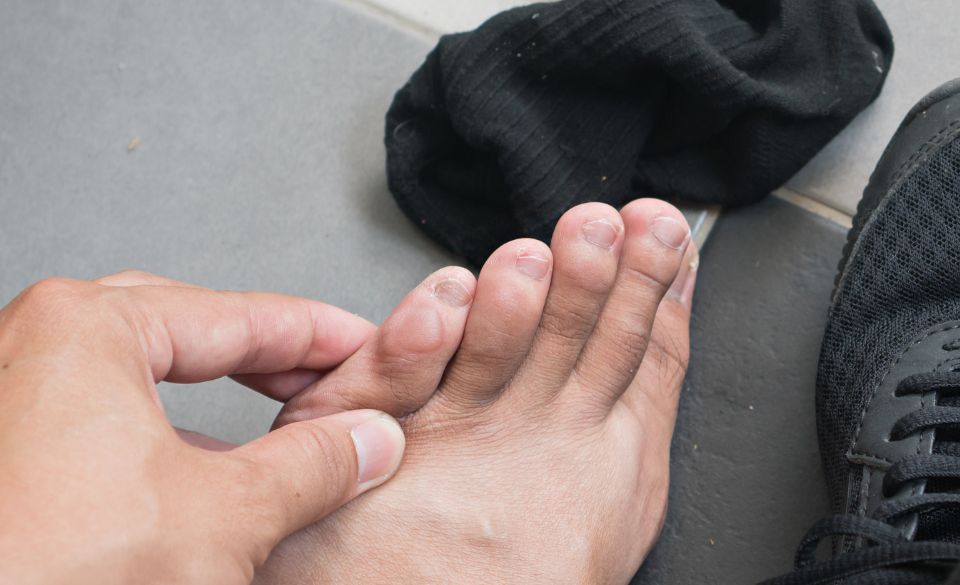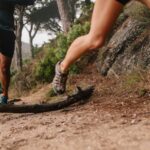
Preventing and Treating Blisters from Running
Page Contents
Running is a popular form of exercise that is not without its challenges. One of the most common issues that runners face is blisters. Blisters are small pockets of fluid that develop due to friction and pressure on the skin. They can be painful and make running uncomfortable. In this article, we will explore the causes of blisters from running, as well as strategies to prevent and treat them.
It is important to address the issue of blisters from running because they can impact a runner’s performance and ability to continue training. If left untreated, blisters can become infected and lead to more serious health problems. Taking preventive measures and knowing how to treat blisters when they do occur can help runners stay on track and achieve their goals.
Understanding Blisters
Blisters are defined as small pockets of fluid that form on the skin. They are typically caused by friction and pressure on the skin. When the skin is rubbed repeatedly, the top layers of skin separate from the lower layers, and fluid accumulates in the space between them, resulting in a blister.
There are several causes of blisters from running. One study published in the Journal of the American Podiatric Medical Association found that ill-fitting shoes, excessive moisture, and running on uneven terrain are some of the most common causes of blisters among runners.
There are three types of blisters: friction blisters, blood blisters, and blistering disorders. Friction blisters are the most common type and are caused by repeated friction or pressure on the skin. Blood blisters occur when blood vessels are damaged due to pressure or trauma. Blistering disorders are less common and can be caused by medical conditions such as diabetes or autoimmune diseases.
Prevention of Blisters from Running
Prevention of blisters from running is essential to ensure that runners can continue their training and participate in races without being sidelined by painful and uncomfortable blisters. There are several measures that runners can take to prevent blisters from forming in the first place.
Firstly, proper footwear is essential for preventing blisters. Runners should choose shoes that fit properly and have good ventilation to prevent heat and moisture buildup. Wearing shoes that are too tight or too loose can cause friction and rubbing, which can lead to blisters.
Socks are another important factor to consider when preventing blisters from running. Moisture-wicking socks made from synthetic materials can help keep feet dry, reducing the risk of blisters. Socks with seamless toes can also reduce friction and rubbing, which can cause blisters to form.
Lubrication is also a useful tool in preventing blisters from running. Applying a thin layer of lubricant, such as petroleum jelly, to areas prone to blisters can reduce friction and prevent blisters from forming.
Taping is another option for preventing blisters from running. Applying a layer of tape to areas prone to blisters can provide an extra layer of protection and reduce friction. However, it is important to ensure that the tape is applied properly and does not cause additional rubbing.
Finally, hydration and nutrition play a crucial role in preventing blisters from running. Proper hydration can help prevent heat and moisture buildup, while adequate nutrition can help maintain healthy skin and prevent cracking and peeling.
Treatment of Blisters from Running
Treatment of blisters from running is important to prevent infection and promote healing. There are several ways to treat blisters from running, depending on the severity and location of the blister.
The first step in treating a blister from running is to leave it alone if possible. Blisters are the body’s natural response to friction and rubbing, and they serve as a protective barrier while the skin underneath heals. If the blister is not causing significant pain or discomfort, it is best to leave it intact.
If the blister is causing discomfort or pain, draining it may be necessary. To drain a blister, clean the affected area with soap and water, sterilize a needle with rubbing alcohol or flame, and gently puncture the blister near the edge. Allow the fluid to drain out, and then cover the blister with a sterile adhesive bandage.
After draining the blister, it is important to protect it from further friction and rubbing. Apply a sterile adhesive bandage or moleskin to the blister to protect it from further irritation. If the blister is in an area that is difficult to bandage, consider using a liquid bandage to provide a protective layer.
Pain and inflammation can also be treated with over-the-counter medications such as ibuprofen or acetaminophen. These medications can help reduce pain and swelling, and can also help prevent infection.
If the blister becomes infected, seek medical attention immediately. Signs of infection include redness, warmth, swelling, and discharge from the blister. A doctor can prescribe antibiotics or drain the blister if necessary.
When to Seek Medical Attention
Knowing when to seek medical attention for a blister from running is important to prevent infection and ensure proper treatment. While most blisters can be treated at home, there are certain signs that indicate a need for medical attention.
One sign that medical attention is necessary is if the blister becomes infected. Signs of infection include redness, warmth, swelling, and discharge from the blister. Infection can lead to more serious complications, and it is important to seek medical attention as soon as possible.
Another reason to seek medical attention for a blister from running is if the blister does not heal after a few days. Blisters typically heal on their own within a few days to a week, but if the blister does not show signs of improvement after a few days, it may require medical attention.
If the blister is located in a particularly sensitive area, such as the face, eyes, or genitals, it is also important to seek medical attention. Blisters in these areas can be particularly painful and may require specialized treatment.
In some cases, blisters from running may be a symptom of an underlying condition, such as an allergy or infection. If blisters continue to appear despite proper prevention and treatment measures, it may be necessary to seek medical attention to identify the underlying cause.
Tips for Preventing Blisters During Running Events
Preventing blisters during running events is essential to ensure a comfortable and enjoyable experience. There are several tips that runners can follow to minimize the risk of developing blisters.
The first and perhaps most important tip is to train properly. Gradually increasing running distances and wearing the same shoes that will be used during the event during training can help the feet adapt to the stress of running and reduce the risk of developing blisters during the event.
Choosing shoes that fit properly is also crucial in preventing blisters. Shoes that are too tight or too loose can cause friction and rubbing, leading to blisters. It is important to choose shoes that fit comfortably and provide adequate support for the feet.
Experimenting with different types of socks can also help prevent blisters. Socks made of synthetic materials that wick away moisture can help keep the feet dry, reducing the risk of blisters. Some runners also prefer to wear double-layer socks or toe socks to minimize friction and rubbing.
Considering taping or lubricating the feet can also be helpful in preventing blisters. Taping high-friction areas, such as the toes and heels, can provide a protective barrier and reduce rubbing. Lubricating the feet with petroleum jelly or other anti-chafing products can also help reduce friction and prevent blisters.
Taking breaks and stretching during the event can also help prevent blisters. Resting the feet and stretching the muscles can reduce the risk of developing blisters from prolonged running.
Final Words – Preventing and Treating Blisters from Running
Blisters from running can be painful and frustrating, but they are preventable and treatable. Proper footwear, socks, lubrication, and hydration can all help prevent blisters from forming. If a blister does occur, it is important to take proper care of it to prevent infection and promote healing. By following these tips, runners can stay on track and achieve their goals without being sidelined by blisters.



